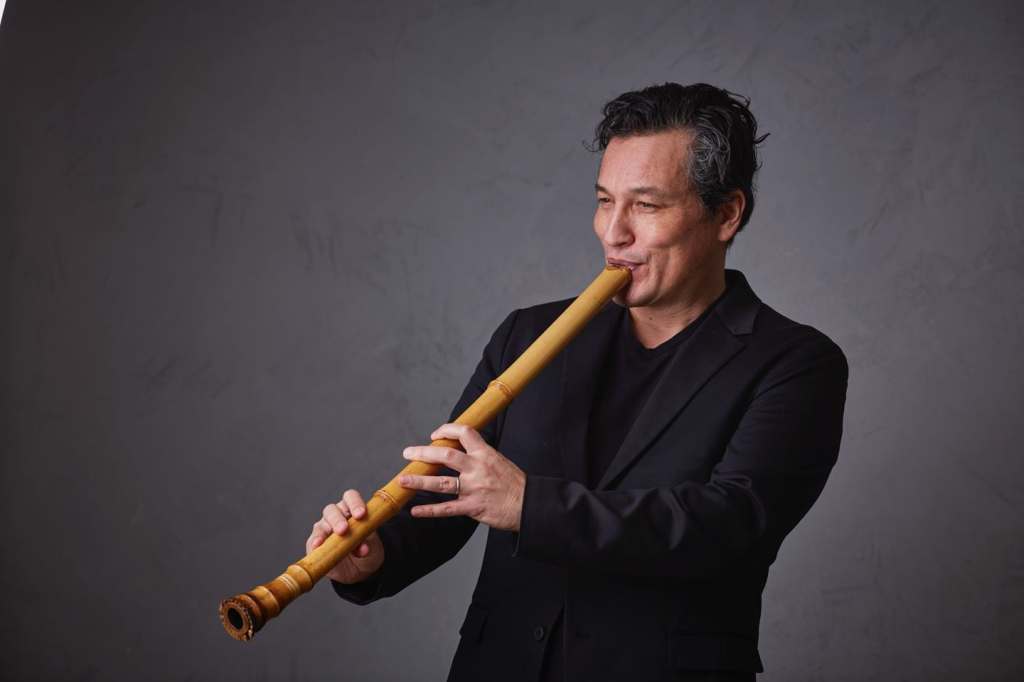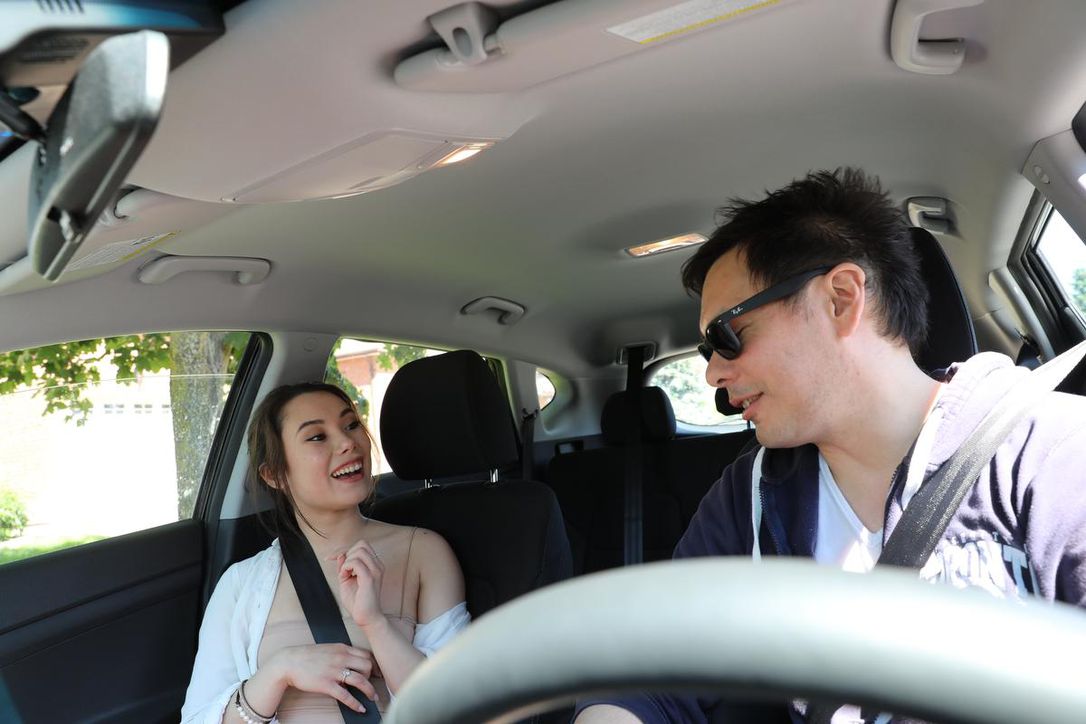
Photo: Anthony Mongiello via the Boston Globe.
Kojiro Umezaki plays the shakuhachi, a Japanese vertical bamboo flute.
In the same way different languages often express something about a culture that is not seen in other cultures, different musical instruments can do the same. A Japanese musical instrument called the shakuhachi is like that. And it can take hold of musical people in surprising ways.
A.Z. Madonna has the story at the Boston Globe. She writes, “You have probably heard this sound before. This is the first thing that shakuhachi player Kojiro Umezaki tells people who aren’t familiar with his instrument.
“Maybe you’ve heard the vertical bamboo flute in movies when you see a scene of Japan, or you’ve heard one playing in the background at an Asian restaurant. Or you might have heard it in video games; if you’ve played ‘Ghost of Tsushima,’ the acclaimed action-adventure game from 2020, you didn’t just hear a shakuhachi, you heard Umezaki playing it.
“But there’s more to the instrument than its status as a symbol of Japanese music and Japan itself. …
“ ‘It is the sound of the earth,’ said shakuhachi player and maker Perry Yung in a phone interview. ‘The sound of the wind passing through a bamboo forest. It’s a sound that is constantly shifting tone colors, like light passing in the sky through clouds.’
“The shakuhachi was historically used as a solo instrument in Zen Buddhist meditation, specifically by wandering mendicant monks. It also sometimes appears in Japanese classical music, often with a koto (zither) and the three-stringed shamisen. Most modern shakuhachis have five tuning holes, with four in the front and one on the rear, and they’re tuned to the minor pentatonic scale. However, the player can partially cover holes and bend pitches to produce any pitch they want. …
“It somewhat resembles a recorder, but has no mouthpiece, so producing a sound is trickier. ‘You have to find the spot that sets up the vibration with your lips,’ said Umezaki … ‘My mother likes to tease me and say that when I first started playing it, it took me a year to make sound.’
“The child of a Japanese father and Danish mother, Umezaki grew up in Tokyo and attended an international high school. There his choir teacher was a student of famed shakuhachi player Goro Yamaguchi, and he suggested Umezaki try the instrument as well. …
‘As someone with a mixed Japanese background, you do start to wonder about the Japanese side of who you are,’ he said. For him, playing shakuhachi was ‘the simplest way to get in touch with something that is very much identified with Japanese culture.’
“The instrument found Yung in 1994, while he was acting in a play directed by Ellen Stewart at the New York experimental theater venue La MaMa. Shakuhachi player Yukio Tsuji was in the production’s band, playing the instrument in a ‘very experimental manner,’ he said. … ‘But at one point, the show was silent, and then there was the shakuhachi, and it changed my world.’ After the show, Yung rushed backstage to ask where he might get one. ‘[Tsuji] just looked at me wide-eyed, and said, “I see you’re bitten now.” ‘ …
“Yung took a DIY approach — he bought bamboo at a flower market, and copied flutes at Tsuji’s own workshop, he said. ‘I basically learned how to play and make at the same time.’
“Some time later, he studied in Japan with Kinya Sogawa, an established professional musician and craftsman. ‘He didn’t speak any English, and I didn’t speak any Japanese at the time,’ Yung said. ‘But in the traditional manner of study, you imitate the master and don’t ask questions.’ …
“Umezaki has played with Silkroad, the broad global music initiative founded by Yo-Yo Ma, for over 20 years. He considers what he’s learned there the closest thing he’s had to conservatory training. …
“Yung, whose workshop floats between New York and Rhode Island, has more recently started incorporating the instrument into activism, particularly at rallies against anti-Asian hate. ‘I start my talk with a shakuhachi offering, to others who have been affected by the violence that has been perpetrated upon the Asian-American community in recent years.’ “
More at the Globe, here.

